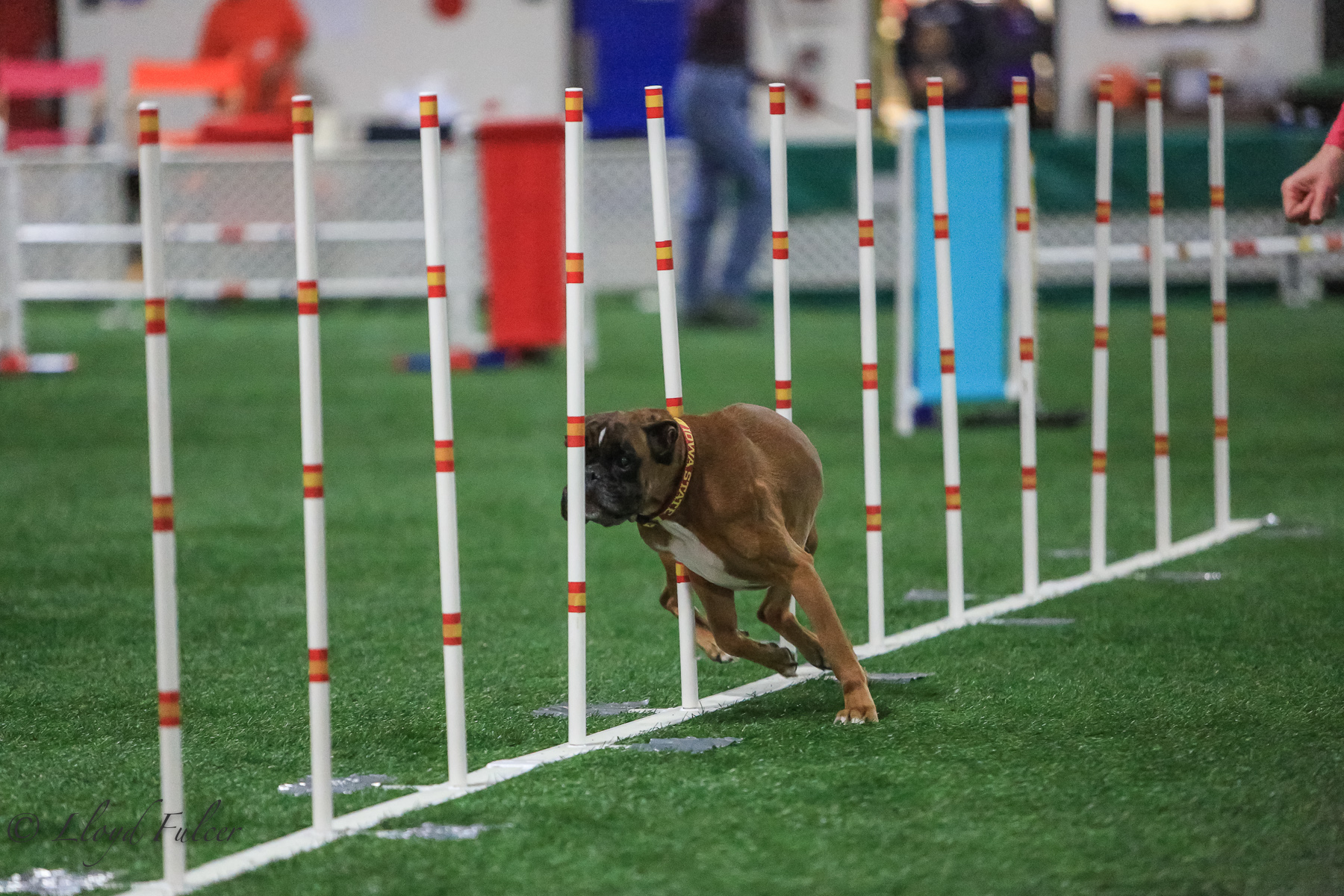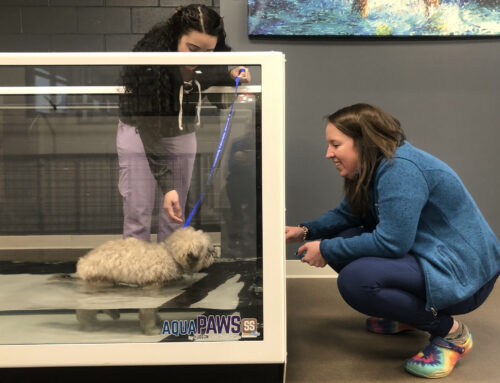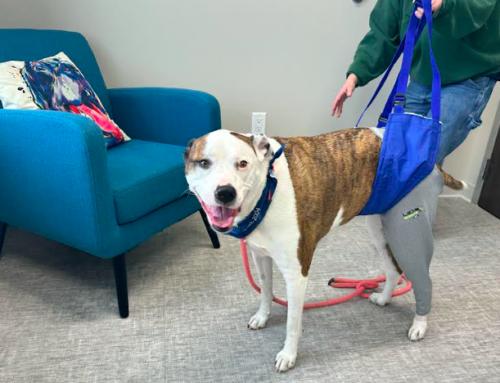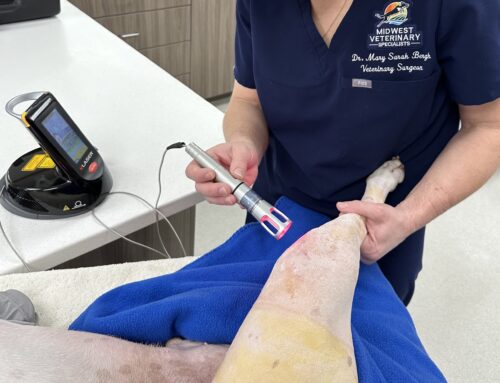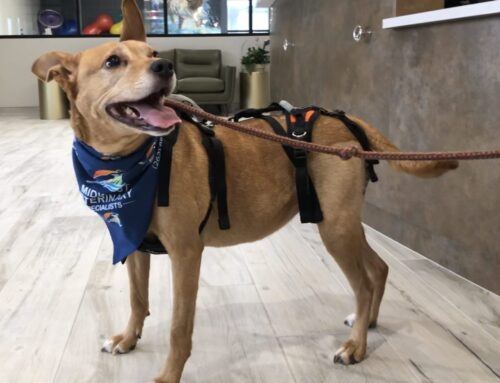Canine sporting events are becoming increasingly popular. These athletic endeavors provide excellent mental and physical stimulation for your dog, but they can also lead to injuries. Our Midwest Veterinary Specialists team wants to provide information about common sporting injuries in dogs, along with tips to help decrease your dog’s risk.
Sporting dog foot pad injuries
Foot pad injuries, such as lacerations and nail trauma, occur frequently in sporting dogs, and require careful attention to prevent infection. Specific treatments include:
- Foot pad lacerations and puncture wounds — These wounds are thoroughly cleaned and explored to ensure the tendons have not been damaged. If the wounds are clean, they may be sutured closed. A heavily padded splint bandage may also be applied to reduce weight bearing and pressure on the sutures.
- Torn nails — Torn nails can be extremely painful and bleed profusely. The bleeding is controlled, the damaged nail is carefully removed, and the exposed nail bed is bandaged for protection from infection.
Sporting dog forelimb injuries
Common injuries to a sporting dog’s forelimb include shoulder, carpal, and toe injuries. Some specific conditions include:
- Biceps tenosynovitis — The biceps brachii is the muscle that originates on the scapula, runs across the shoulder joint, and inserts on the radius and ulna, and functions to flex and turn the elbow outward and extend the shoulder. In addition, the biceps brachii muscle and the biceps tendon passively and actively stabilize the shoulder joint. Overuse or sudden trauma can cause inflammation of the tendon and its surrounding sheath. Treatment often involves strict rest and nonsteroidal anti-inflammatory drugs (NSAIDs), and physical rehabilitation therapy. Rehabilitation involves shock wave therapy, passive range of motion (PROM) exercises, underwater treadmill therapy, and strengthening exercises. If medical management does not improve the condition, or the lameness returns, surgical treatment may be necessary.
- Medial shoulder instability — This condition occurs secondary to tearing of the medial glenohumeral ligament that supports the inside of the shoulder joint. When the damage is severe, significant joint instability may be present. Treatment may consist of shockwave therapy, specialized hobbles, formal rehabilitation therapy, or even surgery to reconstruct the shoulder.
- Carpal hyperextension injuries — These injuries occur when the ligaments on the palmar (i.e., back) side of the carpus are torn and can result in joint instability and a hyperextended position of the carpus when standing. Depending on the severity and location of the ligament damage, fusion of part or all of the joint may be needed to restore comfort and function.
- Flexor carpi ulnaris tendinopathy — The flexor carpi ulnaris muscle originates at the top of the humerus and ulna and inserts on the accessory carpal bone, and flexes and adducts the dog’s carpal joint. Tendinopathy and separation at the muscle’s insertion point can occur, especially in dogs working on uneven or hard surfaces. The injury presents with carpal swelling or in severe cases an hyperextended stance when weight bearing. Tendinopathy treatment involves laser or shockwave therapy to stimulate healing and increase fiber strength and a splint or orthotic brace to help support the healing structures. Surgical repair is necessary if the tendon has separated.
- Toe injuries — Toe fractures or dislocations are common and can lead to significant pain and lameness. A full orthopedic and radiographic evaluation is needed to determine the injury’s severity and optimal treatment, which can include splinting, buddy-taping toes together, or even surgery.
Sporting dog hindlimb injuries
Sporting dogs also injure their hindlimbs, and common injuries include:
- Iliopsoas muscle injury — The iliopsoas muscle is an important groin muscle that flexes the hip joint. It consists of two portions: the psoas major muscle, which originates at the lumbar vertebrae, and the iliacus muscle. The two muscles join to form the iliopsoas muscle, which inserts on the femur. The femoral nerve passes through the muscle fibers. An injured iliopsoas muscle can affect the femoral nerve, and cause lameness, decreased performance, and difficulty rising. Treatment is often prolonged and involves rehabilitation therapy, therapeutic ultrasound, PROM exercises, and a gradual return to activity. If problems continue, surgical tendon resection may be necessary.
- Cranial cruciate ligament (CCL) rupture — CCL rupture is the most common cause of hindlimb lameness in dogs and is usually initiated by gradual tendon degeneration. Breeds at higher risk include the Labrador retriever, Chesapeake Bay retriever, Akita, rottweiler, and Staffordshire terrier. A tibial plateau leveling osteotomy (TPLO) is usually needed to stabilize the joint, and about 90% of dogs recover fully after this procedure.
- Achilles tendon injury — The Achilles tendon (i.e., the common calcaneal tendon) is composed of several tendinous structures, including the gastrocnemius tendon, the superficial digital flexor tendon, and the common tendon of the biceps femoris, gracilis, and semitendinosus muscles. Tendon injury can occur from laceration, acute tearing or avulsion, or progressive degeneration. When a dog has a complete rupture, their hock will be hyperflexed, and their toes curled downward, and surgical repair is required.
- Tarsal bone fractures — Fractures of the small bones in the tarsus can occur secondary to repetitive stress and strain or from acute overload in canine athletes. Stressed radiographs and a CT scan may be needed to fully evaluate the injury’s extent. In most cases, surgery is needed to stabilize the fracture and restore function to the joint.
Preventing common sporting injuries in dogs
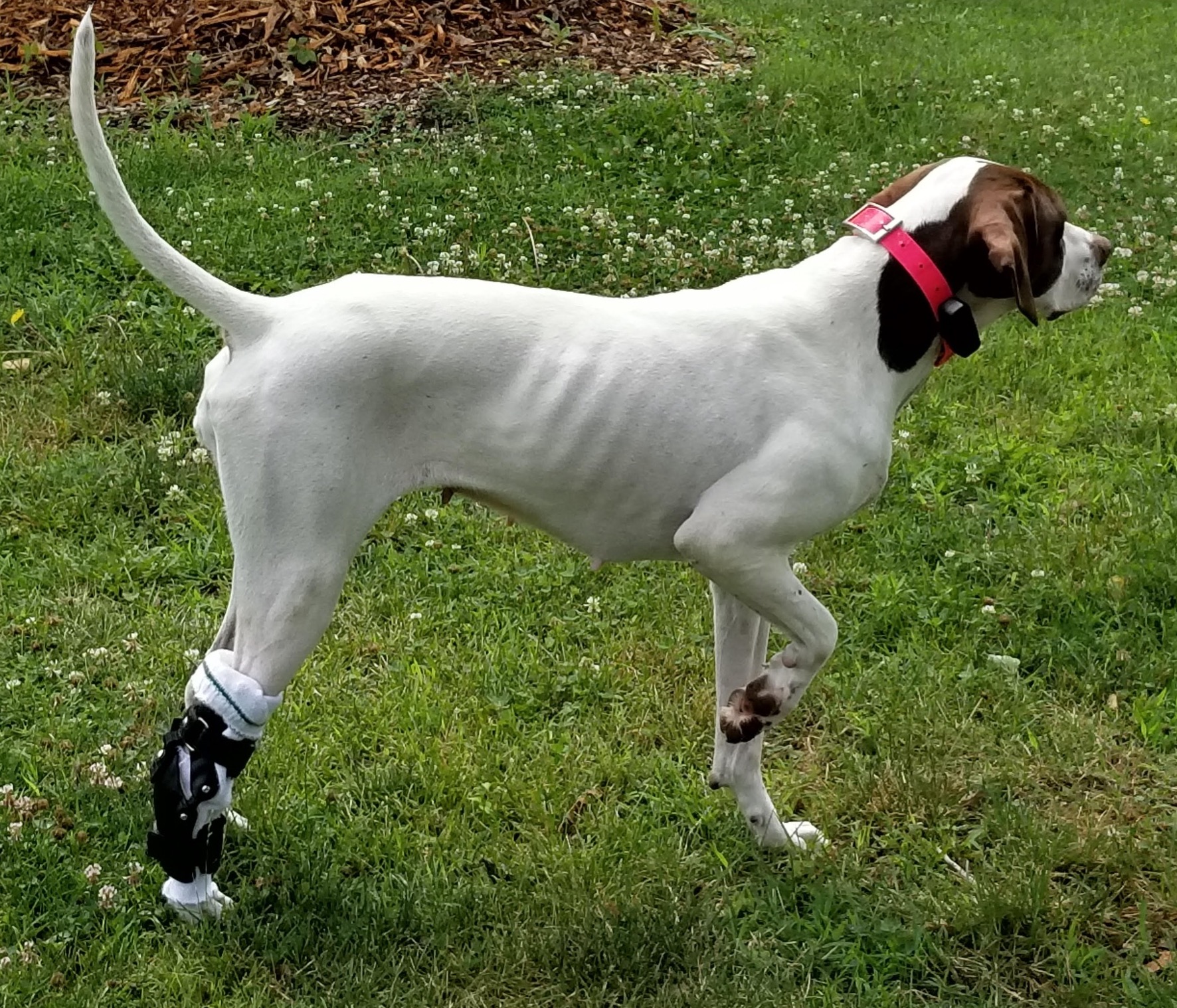
Not all sporting injuries can be prevented, but you can take steps to decrease your dog’s risk.
- Take your dog for a health screening — Before entering your dog in a sporting event, have them examined by a veterinary professional to ensure they are healthy enough to compete.
- Condition and train your dog — Prepare your dog for the sporting event with the appropriate training and conditioning.
- Ensure your dog warms up and cools down — Walk or jog your dog for 5 to 15 minutes before an event, and perform PROM exercises and stretches. After the event, walk your dog for 10 to 20 minutes to improve muscle metabolism and decrease recovery time.
By taking steps to lower your sporting dog’s injury risk, you can ensure they remain athletic and competitive. However, if your dog is injured, contact our Midwest Veterinary Specialists team, so we can get them back into competition as soon as possible.


